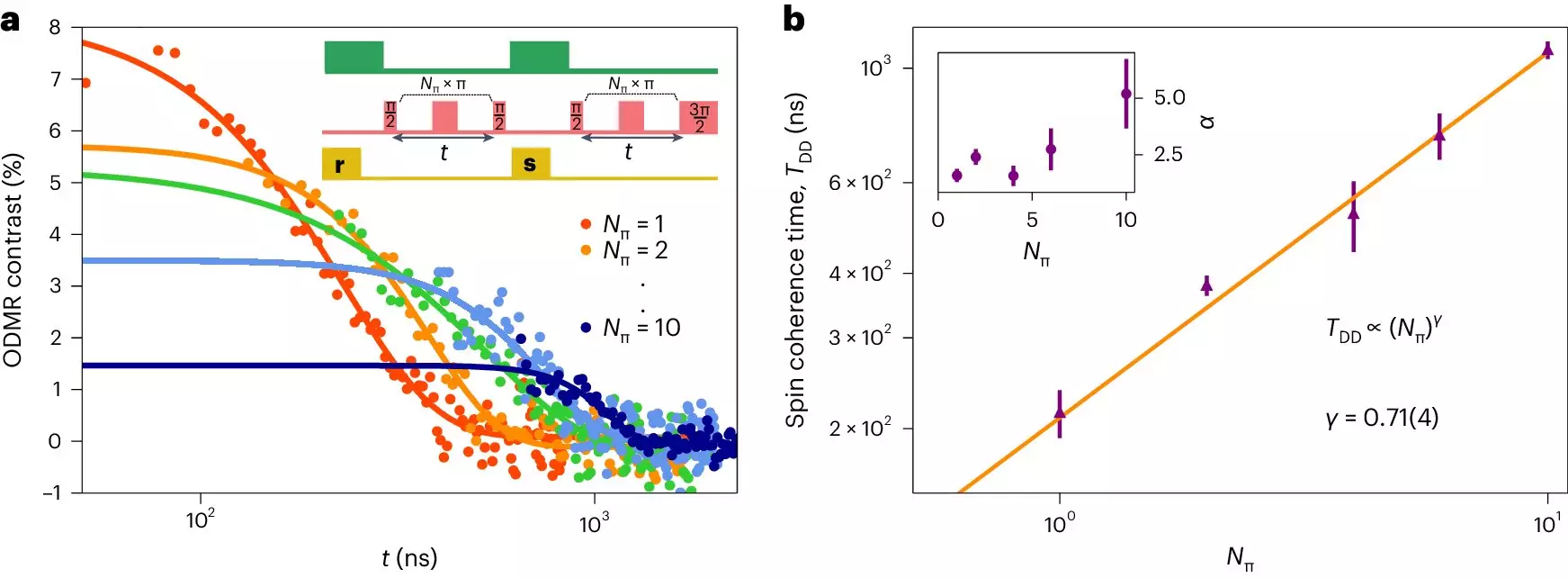Scientists have recently made a groundbreaking discovery in the realm of quantum information storage using a single atomic defect in a layered 2D material. This defect, found in hexagonal boron nitride (hBN), has demonstrated the ability to retain quantum information for microseconds at room temperature. This remarkable feat underscores the potential of 2D materials in advancing quantum technologies and opens up a myriad of possibilities for future applications.
The researchers from the Universities of Manchester and Cambridge have shed light on the concept of spin coherence, where an electronic spin can hold onto quantum information even in ambient conditions. This property, previously unexplored in solid-state materials, has been successfully demonstrated in hBN, marking a significant advancement in the field of quantum technologies. The findings, published in Nature Materials, have surpassed initial expectations, revealing that spin coherence at room temperature can last for a surprisingly long period.
Hexagonal boron nitride, consisting of stacked one-atom-thick layers, possesses atomic defects that play a crucial role in the retention and manipulation of quantum information. These defects serve as local traps for electrons and have the ability to absorb and emit light, making them ideal candidates for studying spin properties in quantum systems. The researchers have successfully shown that these defects can be controlled and manipulated using light, a remarkable achievement in the field of quantum technology.
Dr. Hannah Stern, the first author of the study, emphasizes the importance of fundamental investigations into new materials, such as hBN, in advancing quantum technologies. By studying the excited state dynamics within these materials, researchers can broaden the toolkit of available materials for future applications. Each new promising system brings us one step closer to the scalable implementation of quantum technologies, paving the way for innovative advancements in the field.
While there is still much to uncover and optimize in this groundbreaking discovery, the findings have great potential for future technological applications, particularly in sensing technology. Scientists are actively working to enhance the quality and reliability of these atomic defects, further extending the spin storage time and exploring optimization strategies for quantum-technological applications. This research represents a significant step forward in the development of materials for quantum technologies and reinforces the UK’s ambitions in this critical area.
The discovery of spin coherence in a single atomic defect within a 2D material showcases the immense potential of materials like hBN in advancing quantum technologies. By leveraging the unique properties of atomic defects, researchers are pushing the boundaries of quantum information storage and manipulation, opening up new avenues for technological applications. As we continue to explore and optimize these materials, we move closer to harnessing the full power of quantum technologies in various fields.


Leave a Reply